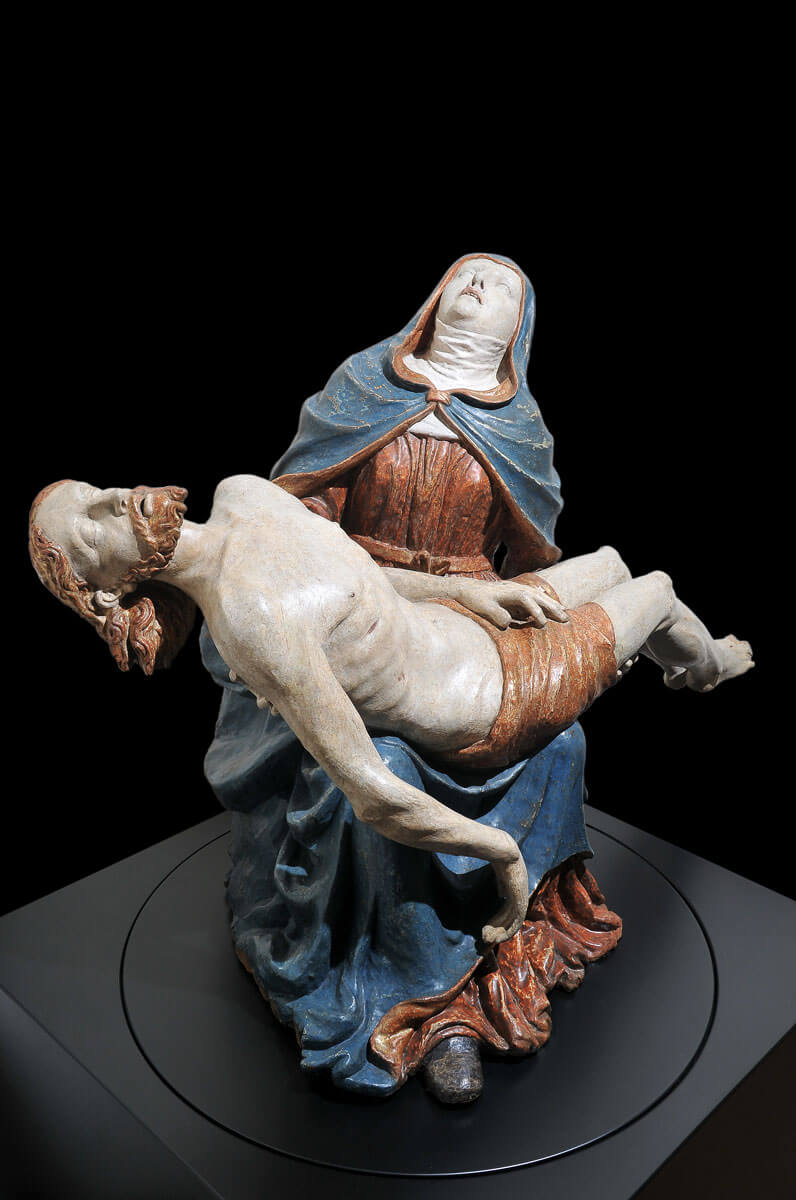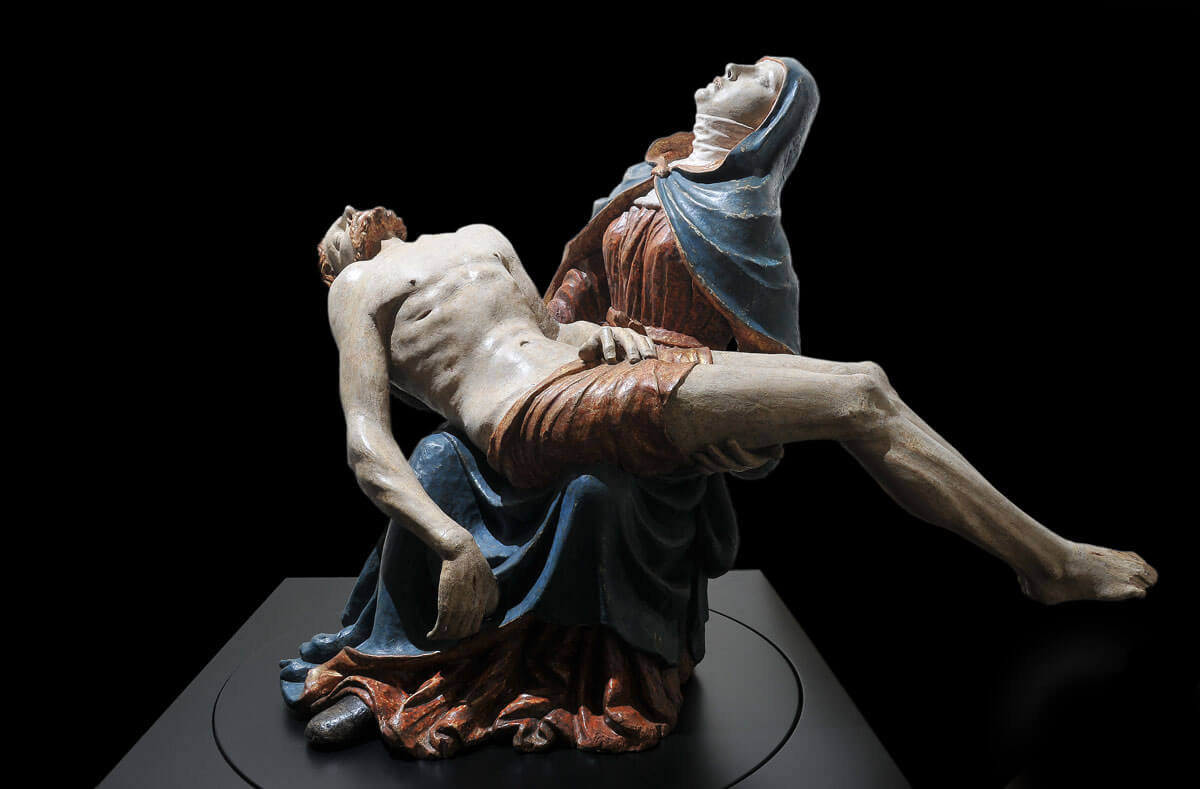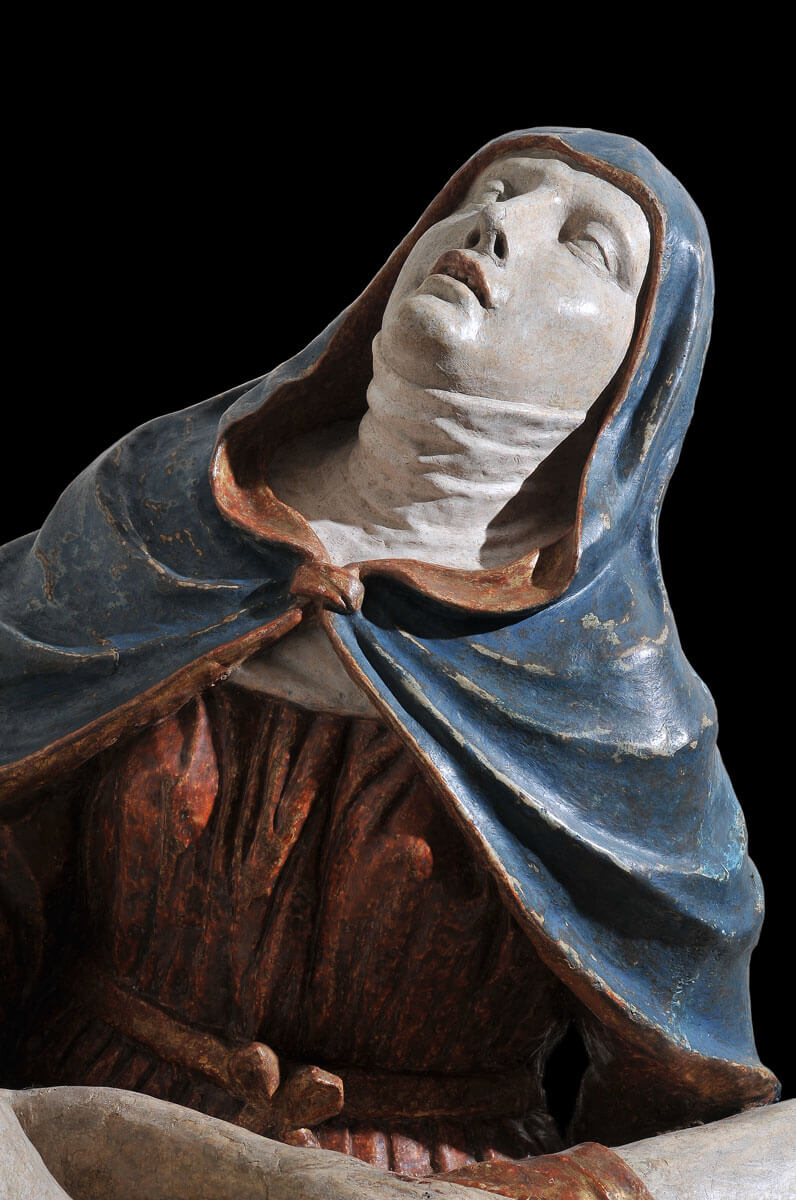DESCRIPTION
The sculpture of the Madonna holding on her knees the dead body of Christ represented the central nucleus of a Lamentation, normally consisting of eight figures, typical of Lombard churches and, in terracotta versions, of Emilian churches in the fifteenth and sixteenth centuries. The accentuated drama of both figures with the pronounced arching of the Madonna’s body, captured as she faints, the divergence in the position of their bodies as if in centrifugal motion (far from the equilibrating effects of Renaissance art) would point to a date around of midway through the Sixteenth century. The tradition of the fifteenth-century Po Valley “Mortorii” can easily be seen in this particular group. Research, during that time, into dynamic composition techniques – typical of the Mannerists – are evident in the work, in an era in which this type of composition was spreading through the area south of the Alps.
This Compassion would appear to reinterpret the models of artists like Andrea da Milano, the author of the much-celebrated Lamentation in the Church of San Vittore in Meda, yet in a more dramatic and intensely theatrical key, as would befit the scenic styles in the chapels of the Sacri Monti (Sacred Mountains). An artist specialised in this type of representation and working in the area of such sculpture was Giovan Battista da Milano a pupil of Andrea da Milano.
LITERATURE
–



